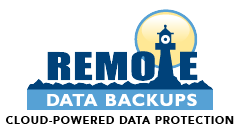Learn More: Backup Articles
The Truth About Bare Metal Backup vs. File and Folder Backup
By Amanda Finch | RDBU Marketing
Recently, image backup, also known as bare-metal recovery, has quickly become the preferred data protection method for PCs, servers, and virtual machines.
Today’s complex IT environments have forced users to adjust to new backup methods. File and folder backups have now become a more time-consuming process.
A challenge during the setup process of a new computer is trying to transfer one’s computer data from the prior PC. Another challenge is completing a full recovery. These are two areas where bare metal recovery (image backups) shines.
Top 5 reasons why image backups are replacing file and folder.
Faster Recovery Time Image backups are best known for their quick recovery time allowing users and business to reduce downtime. IT Technicians have known about this major benefit to meeting RTO for years. Recovery Time Objectives (RTO) are built into a business’s disaster protection recovery plan.
The RTO goal is the greatest amount of time that IT systems can be out of order after an unexpected IT crash before negatively impacting operations or profits. The organization analyzes the potential impact that an IT system failure can have upon a business and decides on an RTO goal.
But, unless a business completes a total test restore, predicting the amount of downtime experienced during a complete data recovery process is difficult. Unfortunately, most companies do not complete this crucial task. Therefore, the term “quick” when referring to recoveries is subjective and influenced by multiple variables. Some traditional examples of the variables that may speed or slow a recovery process are 1. the business’s internet speeds and 2. the size of the data set needing to be recovered. However, generally agreed among IT professionals is that the recovery time of an image backup will be far faster and easier compared to using a file and folder backup. It is common for file and folder recoveries to require days spent on data reorganization once the data has been recovered. This downtime will negatively affect RTO goals.
Ease of image backups Performing an image backup recovery restores the data to the PC (or the server) so that the screen appears exactlyas it did the last time the machine was used. The new drive looks identical to the old drive, and it does not require reloading the operating system or reinstalling any programs. This is the way that most people assume data recoveries work. However, complete data recoveries using the file and folder backup methods is a far more time consuming and complex process.
Usually, choosing an individual file or folder from the backup directory using a file and folder backup method is relatively easy. However, performing a complete restoration of data to a computer or server using file and folder backups is notably more difficult than if the user used a(n) image backup/bare metal recovery software.
When is a complete restoration required? A complete restore is frequently required when a user wants to transfer the data from an old computer to a new one. Or when the user has experienced data loss from a crash or cybercrime event. In contrast to an image backup (that magically brings the system back to exactly how it was organized before the crash), a file and folder data backup recovery requires the users to perform multiple steps to recover and reorganize the data to how it appeared before the crash.
The steps to a traditional complete recovery using file and folder data recovery include:
a. Downloading the files and folders stored in the backup copy to the C drive. Most of thefiles and folders will be downloadedto the user’s directory under the downloads directory.
b. The user must then choose files and folders individuallyfrom the C drive to rebuild how the computer screen looked before the crash. Although the directory looksthe same, the PC screen will be a blank canvas that the user needs to recreate. For example, the recovered bookmark links will appear in the download’s directory but will need to be highlighted and dropped and dragged into the proper directory on the PC to function as they did before.
Image backup can also perform file and folder recoveries. Many users new to image backup may not knowthat image backups can also recover files individually.This is the same way a file and folder backup works. This may be a relief to those who are accustomed to file and folder backup methods.
Affordability Supports Greater Access Image backups were late to the game in the backup and recovery industry. A few companies dominated the space, and the image backup software was expensive. Now that the pricing of image backup/bare metal recovery software is comparable with file and folder level costs, most users are switching to an image backup platform. Today, more backup companies have created image backup software. These companies are now competing against each other for business, thus reducing costs and increasing access.
Quick Recovery of Ransomware and Cyberattacks Cybercrime is at an all-timehigh. When a cyberattack restricts the user’s access to their local data, theRemote Data Backups image backup/bare metal recovery restoration process gets the computer running again, free from the initial virus that corrupted the machine with just a few steps.
During this type of disaster, most users would call the www.RemoteDataBackups.com U.S.-based 24/7 tech line at 1-888-722-2587. Remote Data Backups Techs Support guides users through the recovery process with free tech support. Using a USB thumb drive, the user is instructed to download a small file from the Remote Data Backups website. This file allows users to boot up their machine to access the image backup copies stored on their online backup program. The user then chooses a date to roll the image back to before the machine was infected. The image backup then reformats the drive and restores the image to exactly how the PC or server looked before the cyberattack.
In summary, bare metal recovery software/image backup is more relevant today than the file and folder backups of the past thirty-years. And image backup will continue to be the trend. Image backups still retain the granular file and folder recovery capabilities of the past and will remove a large amount of time and frustration from setting up new PCs or completing full system data recoveries.
Remote Data Backups is a 25-year Backup and Recovery Distributor with 24/7 U.S.-based support. Our affiliate program is 25 years strong. Partners receive an onboarding affiliate link to post within their content. This link allows RDBU affiliates to receive credit for new clients automatically. Our partners receive a 20% recurring income month after month. RDBU manages all clients and tech support. Reoccurring affiliate commission checks are directly deposited monthly. Backup and Recovery is our niche and area of expertise, and our partners built our business. Our service supports backups for PC’s, servers, SaaS, and virtual machines.


